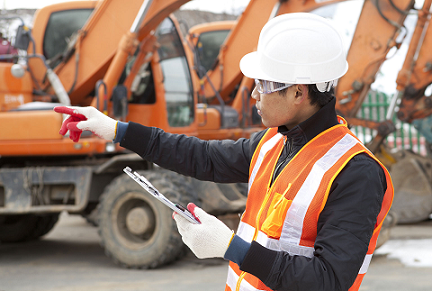Optimizing the performance of a company depends, among other things, on avoiding unsafe acts at work . However, many employers and workers overlook these errors during the workday, either due to ignorance or prioritizing delivery times. But what do we know as unsafe acts? Here we will talk about them, practical examples, the risks they imply and how we can correct them.
What do we call unsafe acts in the work environment?
Unsafe acts at work are omissions or mistakes made by a worker while performing their assigned job or activity. This carries the risk of suffering an accident , either individual or involving other employees. In fact, statistical studies indicate that 90% of workplace accidents are caused by unsafe acts.
Many times, the problem occurs because these are standardized: not wearing PPE, skipping the protocol, lack of training when using equipment, etc. Sometimes all this is done in the interest of saving time, but it is a serious mistake and can compromise the safety of the personnel.
Practical examples of unsafe acts
When unsafe or unconscious acts are normalized, it is difficult to recognize them in order to apply corrective measures. This is important in our situation, because in times of pandemic we must have the protocols more present than ever. Therefore, with this list you will be able to know the most common unsafe acts in the work environment:
- Work without wearing protective equipment.
- Using equipment without authorization.
- Overloading equipment or installing it improperly.
- Not communicating the risks of the job.
- Working at risky speeds.
- Having a cluttered work area.
- Perform maintenance or cleaning on equipment that continues to operate.
- In times of pandemic, do not use a mask or face shield, when the job requires it.
How can we correct unsafe acts?
Once we have detected the incidence of one or more unsafe acts, we must act. Keep in mind that it is not about intervening in an arrogant or altered way. To know how to deal with these situations, here are some tips.
- Intervene and approach the worker calmly.
- Do not transmit aggressiveness during the intervention.
- Always try to address the problem from a positive comment.
- Then talk about how important safety is.
- Mention the unsafe act you witnessed and explain the possible consequences of it.
- Consult the worker about other alternatives to carry out the work safely.
It is also important to ask if there is any reason that makes it impossible for the worker or workers to comply with the safety protocols. If as a supervisor or employer you notice defiance or reluctance on the part of one or more workers, it is worth mentioning the potential disciplinary consequences that this entails. If necessary, remember the internal regulations for safety and health at work, which they accepted when starting work in the company.
Preventive measures to minimize unsafe acts
To avoid tensions in the work environment or accidents that lead to serious consequences, it is advisable to implement a preventive management system , since the most important thing will always be to prevent.
Select your staff correctly
This point is key, since the workers of a company are a reflection of the criteria of their employer when selecting them. Try to work with qualified professionals who are aware of the importance of job safety and work regulations.
Conduct training on occupational risk prevention
It is important to train workers in the use of PPE , machinery, maintenance work, etc. You should also keep up to date with the news regarding security, protective materials and others. By having the same information, they will work in harmony and you will avoid witnessing risky acts.
Trust a supervisor
Although workers may be well trained, a supervisor never hurts. Its function is vital, especially in jobs that involve exposure to high risks , manipulation of potentially dangerous machines and activities that easily lead to accidents.
Although falling into unsafe acts may be due to ignorance, that does not relieve us of responsibility. As workers, we must bear in mind not only our safety, but that of our co-workers. As employers and supervisors, we cannot prioritize the speed of job delivery over the safety of those who are part of the company and provide your trust. Safety depends on everyone and avoiding these risks is one more point that must be met in search of true efficiency.


